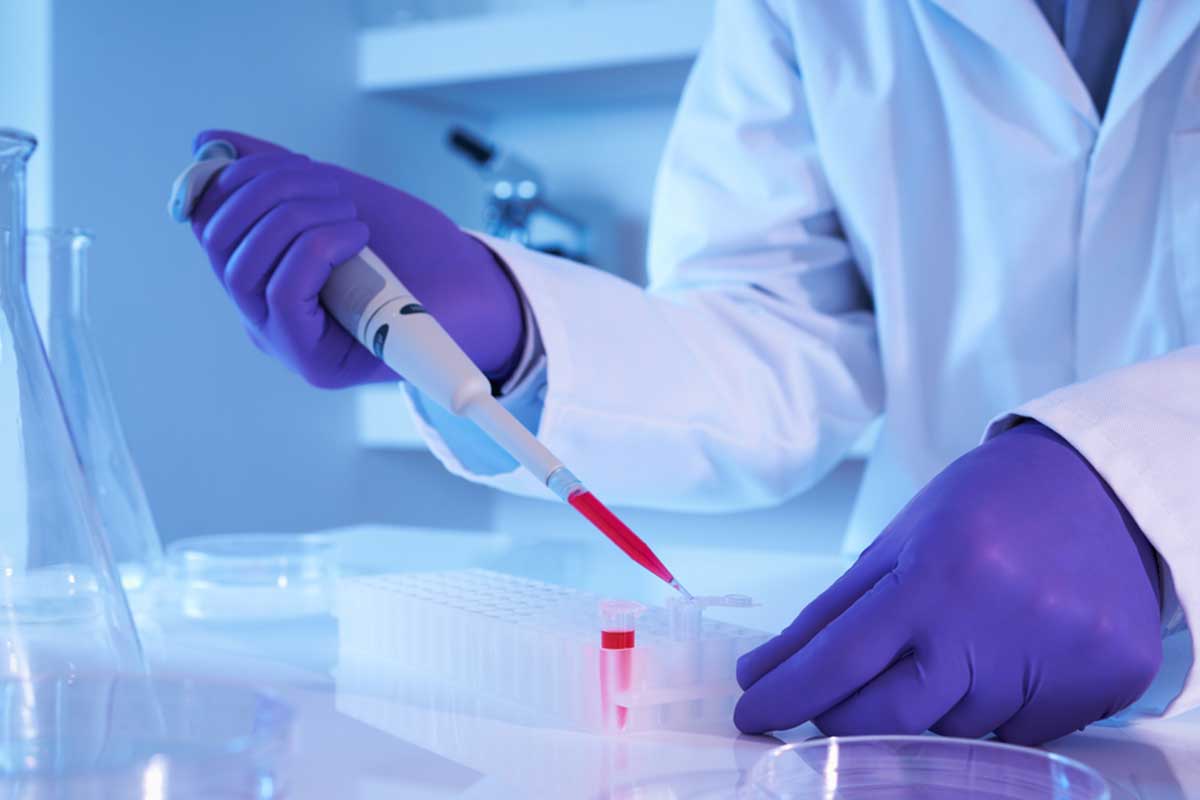Stem Cell And Growth Factors In Aesthetics
Stem Cell And Growth Factors In Aesthetics

After investigating all of the different alternative sources to harvest growth factors– from fibroblasts, to adipose stem cells, umbilical cord, and amniotic, what is the ideal cell source to culture in order to harvest these proteins for aesthetic applications? That would be the mighty bone marrow stem cell– the most intelligent and powerful stem cell in the entire body.
The bone marrow stem cell, first and foremost, is the only mobile stem cell in the entire body. Every other stem cell in the body stays in its tissue niche of origin, whereas the bone marrow stem cell’s number one role and objective is to patrol the body looking for injury. While this cell resides in the bone, it travels and leeches into the vascular system– patrolling the body looking for injury.
When it finds that injury the bone marrow stem cell acts as an intelligent, microscopic pharmacy– giving off a portfolio of growth factors and cytokines to instruct and coordinate the biological healing of diseased and damaged tissue. Bone marrow stem cells are very mighty and powerful, and one that truly reigns supreme in regenerative medicine and aesthetic skincare.
The bone marrow stem cell plays multiple roles in the body, but there are the three primary functions in the realm of regenerative aesthetics. The first role is that of “conductor.” This cell really acts as a coordinator of all biological activity within the body.
The next role would be that of the “worker.” In this role, the stem cell gives off protein molecules (growth factors and cytokines) which act as biological construction workers, coordinating all of the repair and biological activity.
The third and final primary role of the bone marrow stem cell is the most important of the three, and that role is acting as the “firefighter.” The proteins produced by the bone marrow stem cell are so powerfully anti-inflammatory that they quench the flames of inflammation unlike any other cell in the entire body.
In summary, bone marrow stem cells coordinate the activity, coordinate the workforce, and ultimately quench the flames of inflammation– unlike any other cell used in skincare.
The bone marrow stem cell is the only cell in the body, stem cell or otherwise, that contains a natural, pro-healing secretome. The secretome is the measurement, or the portfolio proteins, that a cell naturally gives off. If you were to measure the cell and its contents, the result would be the cell’s natural, inherent secretome. Again, the only cell in the entire body that contains a naturally anti-inflammatory, regenerative, and healing secretome, is the bone marrow stem cell.
There are several growth factors and cytokines that the bone marrow stem cell produces in abundance. Some of these proteins are widely utilized in regenerative medicine, and play a critical role when it comes to aesthetics and wound healing– especially in an anti-inflammatory environment– all of which can be found in the bone marrow stem cell secretome and are the same growth factors what would be used topically.
The chart above depicts the full spectrum of the portfolio of proteins that the bone marrow stem cell naturally gives off. The portfolio leans heavily on the anti-inflammatory side, which is consistent with the bone marrow stem cell’s role in the body– especially at a young age.
It is also important to remember that the bone marrow stem cells harvested in the context of aesthetics are typically sourced from younger individuals. As a result, the harvested cells are pristine mesenchymal stem cells which give off an abundance of anti-inflammatory proteins. The net pattern of these proteins produced determines the physiological effect upon application of these products to the tissue, so an anti-inflammatory portfolio creates an anti-inflammatory effect on the skin.
As seen in the above chart, there are two specific growth factors that the adipose stem cell gives off– tissue necrosis factor and vascular endothelial growth factor. Both are quintessential inflammatory proteins that are actually produced in abundance by the adipose stem cell. On the flip side, the bone marrow stem cell produces soluble versions of these protein molecules. These soluble molecules act as an antidote, in that they control the production of inflammatory biomarkers. The side by side comparison demonstrates the adipose stem cell’s production of highly inflammatory proteins while the bone marrow stem cell produces the solution to these inflammatory proteins.
There is a significant amount of data, decades of published medical literature, that shows the anti-inflammatory characteristics of the bone marrow stem cell, along with the significant role in these cells play in aesthetics and aging. This data specifically highlights the anti-aging, wound healing, UV protection, and collagen stimulating benefits of the growth factors produced by the bone marrow stem cell. When looking at clinical efficacy, it is important to support it with significant data from medical literature.
Some of the most common questions that get asked about bone marrow stem cells in aesthetic products are, “Where do these stem cells come from? How are they harvested? How do we utilize them in the lab? What’s ending up in the in the final product that we apply to our skin?”
At AnteAGE®, we source our bone marrow stem cells from government regulated bone marrow donor banks. Since these banks are government regulated, they operate under strict regulatory conditions. We also get to choose what each donor looks like– which is important because as we get older, the bone marrow stem cell can become sluggish and senescent. Because of this, we always make sure to choose a younger demographic as our donor (generally a female between the ages of 20 and 25). We also ensure that each of our donors is extremely healthy, athletic, and are donating their marrow voluntarily.
Moreover, each donor is put through a rigorous health screening process to ensure that they themselves are free and clear of any disease before they are allowed to become a donor– not just for AnteAGE®, but for any research purposes or other scenario where the marrow and the stem cell may be utilized.
The marrow is harvested through what we call routine bone marrow aspiration. It is not a very comfortable procedure, so each volunteer donor is paid. Once the marrow has been harvested, the mother stem cell is isolated from the marrow and sent to the AnteAGE® laboratory in California, where we begin the culturing process.
The culturing process begins with taking the stem cells and placing them into sort of petri dish into a nutrient rich broth. The cells feed off this broth, enabling them to grow and divide in the laboratory culture. A few additional steps are then taken to ensure that each cell is mimicking its native environment. By placing them into special bioreactors, oxygen levels are reduced, thus anchoring the cells onto tiny micro-beads. This allows them to grow three dimensionally.
When the cell’s native environment of being inside the bone has been effectively mimicked, the cells start to act as if they are at home in their native environment. Once the cells start to grow and divide, they begin to naturally give off their portfolio of growth factors and cytokines into that nutrient-rich broth or media.
Once the process is complete, the lives cells are filtered out, and the proteins that have been left behind are collected. Upon reaching this point, the media has been conditioned. This term, “conditioned media,” is printed on the back of each AnteAGE® bottle.
It is crucial to ensure adequate delivery. With growth factors and cytokines, it is important to ensure that the media effectively penetrates into the skin. These growth factors already are at a smaller molecular weight, but are still water soluble molecules. This smaller weight means that they do not have the natural ability to effectively penetrate the stratum corneum, which is a very lipid dominant structure in the skin. In order to ensure adequate penetration, we coat the protein molecules in nano-lipid carriers.
Nano-lipid carriers are lipids that mimic what is found in the skin. We are essentially stuffing our proteins inside of these lipids– them think of a lipid envelope. This approach allows the protein molecules to effectively deliver and diffuse throughout the skin structure, helping to move them to their target site for maximum efficacy.
Not only does this process create better delivery, but it also creates protein stability. This stability allows proteins found in a product to last longer– providing product longevity when sitting on the shelf.
AnteAGE® has an extensive stem cell media platform, giving us the complete ability to control the behavior of these cells in the laboratory. This gets the cells to do some very interesting things like altering their genetic behavior and enhancing certain intracellular pathways. As a result, we are able to get the cells to perform differently and release various types of molecules– depending on the end application. The stem cell media platform is numerous, and the Ph.D.’s, academics, and researchers behind the AnteAGE® brand are truly incredible in their ability to effectively work with the most powerful stem cell in skin care, getting the cells to behave in any way we want for the sake of optimizing the performance of this supreme stem cell in skin care.
To recap, the two most important cells that we see in aesthetics today are the adipose stem cell and the bone marrow stem. The adipose stem cell is definitively inflammatory, whereas the bone marrow stem cell is not. The bone marrow stem cell is part of the body’s natural repair system– fat stem cells, unfortunately, are not. The bone marrow is anti-aging while the adipose is completely the opposite. The average donor for fat aspirate is in the middle age category, while bone marrow donors are typically in a younger, healthier demographic. Fat stem cells are typically metabolic byproducts (waste), and the bone marrow stem cell comes from volunteer, laboratory donors. Adipose stem cells tend to be senescent right out of the gate– very sluggish stem cells. The bone marrow stem cells tend to be the complete opposite. Another red flag, fat cells can be very pro-cancerous– producing metabolically active hormones like adipokines. The bone marrow stem cell, however, produces anti-inflammatory proteins that are not linked in metabolic activity from a cancerous perspective.
While there are a significant amount of sources available to harvest proteins, growth factors, and cytokines, in the area of regenerative medicine and aesthetics there is one cell that truly reigns supreme– the mesenchymal bone marrow stem cell.
Contact our office today to schedule your consultation!

